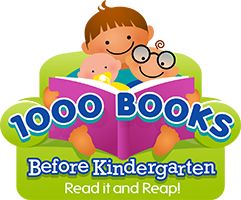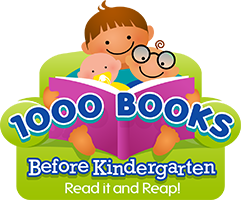
Since 2013, we estimate that over 1,000,000 families have taken the 1,000 Books Before Kindergarten early literacy challenge. As many of you are aware, phonemic awareness is a hallmark of the 1,000 Books Before Kindergarten early literacy challenge because it has long been recognized as instrumental in helping understand what is necessary before children learn to read. It is also important to clarify that phonemic awareness is not the same thing as phonics. As your precious child’s phonemic awareness improves, the next step toward completing the journey to reading is a complete systematic phonics program.
Phonics is a method of teaching reading by correlating sounds with letters or a group of letters. Did you know that the English Language contains just 44 unique sounds? These sounds are broken down as follows: 5 short vowel sounds, 18 consonant sounds, 7 digraph sounds, 6 long vowel sounds, 3 r-controlled vowel sounds, and 5 other special sounds (e.g., Diphthongs). One very important component of reading involves decoding or making connections between sounds and the letters that represent them. With practice (a lot of practice), your child will learn to read.
Is your child ready to begin a phonics program? Before you begin teaching your child to read, it is very important that your child understands certain basic concepts to assist them in their reading. The first concept is the proper orientation of letters. The second concept is the direction of reading, i.e., left to right, and down. The third concept is learning to speak and to differentiate sounds. The final concept is understanding that words have meanings. Studies have shown that children with large vocabularies tend to be better readers. This is attributable to the fact that if children are able to correlate a meaning to a word, he/she is able to visualize and to comprehend much quicker.
By downloading our FREE 1000 Books Before Kindergarten Complete Phonics Roadmap, you will have a systematic method to teach your child how to read! Please do not get too caught up in the “technical” aspects of phonics. Although we introduce fancy words like blends, digraphs, and graphemes, it is more important that your child practice the concepts than to necessarily know the concepts by name.

